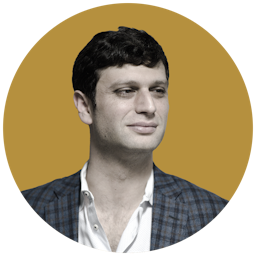Did Stanford Discriminate Against Jews?
This article is from the archive of The New York Sun before the launch of its new website in 2022. The Sun has neither altered nor updated such articles but will seek to correct any errors, mis-categorizations or other problems introduced during transfer.


Stanford University, the powerhouse Silicon Valley university at the vanguard of the start-up revolution, will appoint a task force to look into “the history of admissions policies and practices for Jewish students,” most specifically allegations that the school intentionally discriminated against Jews in the 1950s.
Disclosures about the existence of a secret quota system first came to light over the summer, when Charles Petersen, a historian and n+1 senior editor, unearthed archival material that suggested Stanford’s admissions office purposefully suppressed the number of Jewish students, which remained at 5 percent between 1947 and 1965. These were precisely the years when applications to Stanford exploded and the school became more selective.
While Ivy League quotas on Jewish students in the early 20th century have long been known, Stanford’s practices have not come under similar scrutiny. Initial findings suggest that Stanford’s record is far less pristine than its perfectly manicured lawns.
In addition to the statistics that point to an artificial cap on Jewish admissions, Mr. Petersen found a transcript that speaks to nefarious intent. He calls this document “the closest I’ll come to a historical smoking gun.”
On February 4, 1953, one worried higher-up wrote to another, “There are, he said, a number of high schools in Los Angeles — Beverly Hills and Fairfax are examples — whose studentbody [sic] runs from 95 to 98% Jewish. If we accept a few Jewish applicants from these schools, the following year we get a flood of Jewish applications.”
The Advisory Task Force on the History of Jewish Admissions and Experience at Stanford University will do its work against a backdrop of myriad admissions controversies.
These debates have their roots in the legacy of precisely the kind of quotas that have surfaced in the Palo Alto archives. While the Supreme Court has for decades allowed for a limited consideration of race in the interest of keeping universities diverse, high court watchers note that this allowance is on life support.
Perhaps the most notable recent challenge to the current affirmative action regime is Students for Fair Admission v. Harvard, which alleges bias in how Asian students are handled in the admissions process.
While the judge hearing the case admitted that Harvard’s process was “not perfect,” the university has, at least so far, prevailed at both the district and appellate level.
Just last month, the United States changed its position in the case, when the Biden administration sided with Harvard and urged the Supreme Court to decline to hear the case on appeal. Its fate before a court that may be receptive to its arguments remains uncertain, and could be decided any week.
The driving figure behind this legal effort to eradicate racial consideration in college admissions is Edward Blum. He tells the Sun that he sees that cause as explicitly linked to the skeletons that may be lurking in Stanford’s closet.
Mr. Blum notes that “Harvard, Yale, and others initiated ‘holistic’ admissions criteria in order to limit the number of Jewish students. Now, sadly, it appears that Stanford University may have done the same.”
At a moment of rising anti-Semitim and anti-Zionist sentiment on campuses nationwide, the Advisory Task Force is also charged with “recommending opportunities to enhance Jewish life on campus.”
On that score, Rabbi Dov Greenberg, the executive director of the Rohr Chabad at Stanford, tells the Sun that “if we’re worried about a scandal from 70 years ago, things must be going pretty well here at Stanford.”
________
Image: Wallenberg Hall on the Stanford University Main Quad, via Wikimedia Commons.

